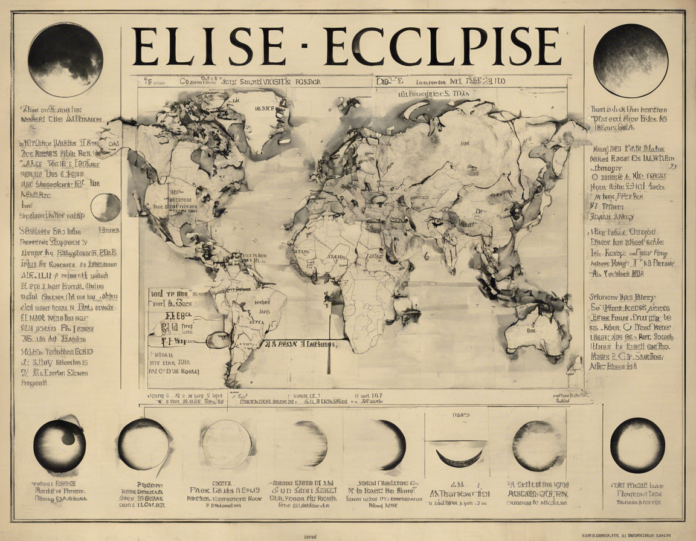Are you ready to witness the celestial phenomenon that is an eclipse? Eclipses have captivated humans for centuries, sparking awe, wonder, and even fear. The upcoming April 8 eclipse promises to be a spectacular event that you won’t want to miss. If you’re wondering about the April 8 eclipse time and when to watch it, this guide will provide you with all the information you need to make the most of this celestial spectacle.
Understanding Eclipses
Before we delve into the specifics of the April 8 eclipse, let’s first understand what an eclipse is. An eclipse occurs when a celestial body, such as the sun, moon, or Earth, moves into the shadow of another body, resulting in a partial or total obscuration of the light from the sun or moon. There are two main types of eclipses: solar eclipses, which occur when the moon passes between the sun and Earth, and lunar eclipses, which occur when Earth passes between the sun and the moon.
Types of Eclipses
- Solar Eclipse:
- Total Solar Eclipse: When the moon completely covers the sun, blocking its light.
-
Partial Solar Eclipse: When the moon covers only a part of the sun.
-
Lunar Eclipse:
- Total Lunar Eclipse: When Earth completely blocks the sunlight from reaching the moon.
- Partial Lunar Eclipse: When only a portion of the moon enters Earth’s shadow.
The April 8 Eclipse
The April 8 eclipse is a total solar eclipse that will be visible in certain parts of the world. During a total solar eclipse, the sun is completely obscured by the moon, creating an awe-inspiring sight as the sky darkens in the middle of the day.
Eclipse Timing
The timing of an eclipse, including the April 8 eclipse time, is crucial for observers hoping to witness this rare event. The exact time of the eclipse will vary depending on your location, as the path of totality (the area where the total eclipse is visible) will pass over specific regions.
Where to Watch
To experience the April 8 eclipse, you will need to be in the right place at the right time. The best locations to watch the eclipse will be along the path of totality, where the full effect of the eclipse can be observed. It’s important to plan ahead and choose a location with a clear view of the sky to maximize your viewing experience.
Safety Precautions
While watching an eclipse can be a breathtaking experience, it’s essential to take safety precautions to protect your eyes. Looking directly at the sun, even during an eclipse, can cause permanent eye damage. Be sure to wear certified solar viewing glasses or use other indirect viewing methods to observe the eclipse safely.
Frequently Asked Questions (FAQs)
Here are some common questions about the April 8 eclipse, along with brief answers:
1. What time is the April 8 eclipse?
– The timing of the April 8 eclipse will vary depending on your location. Check local listings or online resources for precise timings.
2. Where will the April 8 eclipse be visible?
– The April 8 eclipse will be visible in certain parts of the world along the path of totality.
3. How often do total solar eclipses occur?
– Total solar eclipses are rare events that occur approximately every 18 months somewhere on Earth.
4. Can I look at the eclipse without eye protection?
– No, looking directly at the sun, even during an eclipse, can cause serious eye damage. Always use certified solar viewing glasses or indirect viewing methods.
5. What should I bring to watch the eclipse?
– Be prepared with certified solar viewing glasses, a portable chair, water, snacks, and a camera to capture the moment.
Conclusion
As you prepare to witness the April 8 eclipse, remember to mark your calendar, find a suitable viewing location, and take the necessary safety precautions. Eclipses are rare and remarkable events that offer a glimpse into the grandeur of the cosmos. So, gear up for an unforgettable experience as you witness the celestial dance of the sun, moon, and Earth in perfect alignment.


